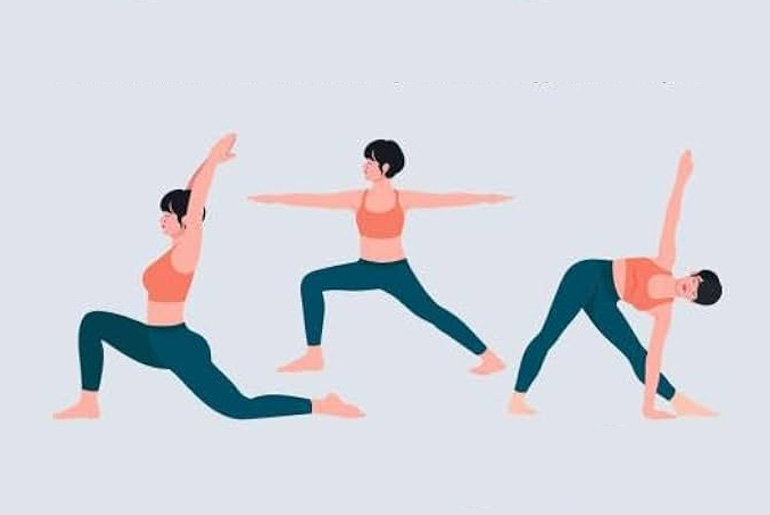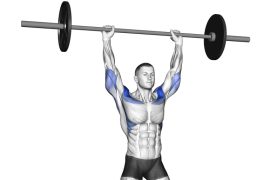Most people tend to focus primarily on maintaining their physical appearance, often prioritizing aesthetics like weight loss, muscle tone, or skin health. While these goals are valid, they can sometimes overshadow other aspects of well-being, such as mental, emotional, and spiritual health. A balanced approach to wellness encompasses not only the body but also the mind, fostering mental clarity, emotional stability, and overall life satisfaction. Somatic workouts typically involve slow, deliberate exercises that encourage the body to move in a natural, free-flowing way. Focusing on holistic health can help individuals achieve long-lasting benefits, including improved energy levels, reduced stress, and a more positive outlook on life, rather than just external appearance.
Somatic workout:
A Somatic workout is a type of movement practice that focuses on the mind-body connection, emphasizing awareness, control, and the release of tension through gentle, mindful movements. The term “somatic” refers to the body and its sensations, and somatic workouts aim to promote deep relaxation, improve flexibility, and restore balance by tuning into the body’s inner sensations and movements.
These workouts typically involve slow, deliberate exercises that encourage the body to move in a natural, free-flowing way, often incorporating principles from yoga, Pilates, and dance. Somatic exercises help to reduce stress, release chronic tension, improve posture, and enhance overall physical and emotional well-being. The approach is often used to increase body awareness and address physical discomfort or pain by re-educating the body’s movement patterns.
How to Perform a Somatic Workout
A somatic workout is a movement practice designed to increase awareness of the body and help release physical and emotional tension. It combines mindfulness, intentional movement, and breathwork to reconnect the mind and body. Here’s how to perform a somatic workout:
1. Create a Calm Environment
- Find a quiet, comfortable space where you can move freely without distractions.
- If possible, use a yoga mat or a soft surface for added comfort, but it’s not necessary.
2. Start with Mindful Breathing
- Begin by sitting or lying down in a relaxed position.
- Close your eyes, and take slow, deep breaths in through your nose and out through your mouth. Focus on the rhythm of your breath, and allow it to calm your mind.
- With each inhale, visualize bringing in fresh energy, and with each exhale, let go of any stress or tension.
3. Body Scanning
- Close your eyes and do a mental scan of your body. Start from your toes and slowly work your way up to your head.
- As you go through each part of your body, notice any tension, tightness, or discomfort. Simply observe these sensations without judgment.
4. Gentle, Flowing Movements
- Start with simple, slow movements such as rolling your shoulders, gently turning your head side to side, or rotating your wrists and ankles.
- Allow your body to move in a way that feels natural and comfortable. The goal is not to stretch or push your body but to engage with it and notice how it feels.
- Progress to larger movements like tilting your torso, reaching your arms overhead, or swaying your body from side to side.
- Keep your movements slow and intentional. Focus on the sensations each movement creates in your muscles and joints.
5. Incorporate Yoga or Stretching
- You can add yoga poses that promote relaxation and body awareness, such as Child’s Pose (Balasana), Cat-Cow Pose, or Seated Forward Fold (Paschimottanasana).
- Gently hold stretches for a few seconds, allowing the muscles to lengthen and release any tension.
- Pay close attention to your breath during these stretches—inhale deeply to expand your chest and exhale to release any tightness.
6. Listen to Your Body
- Throughout the workout, check in with your body. If something feels uncomfortable or painful, adjust or ease off.
- Move slowly and with intention, making sure each movement is aligned with your body’s natural rhythm.
- If needed, take breaks to re-center and focus on your breath.
7. End with Relaxation
- Finish your session with a few minutes of Savasana (Corpse Pose) or another resting position, allowing your body to fully relax.
- Focus on your breath and take a moment to feel any changes in your body. Notice any sensations of release or relaxation in the muscles and joints.
How Does a Somatic Workout Help Mental Health?
A somatic workout can have a profound impact on your mental health by fostering mindfulness, reducing stress, and improving emotional well-being. Here’s how it helps:
1. Reduces Stress and Anxiety
- The slow, intentional movements help activate the parasympathetic nervous system, which promotes relaxation and helps reduce the effects of stress.
- Breathing techniques combined with mindful movement can help to calm the mind, ease anxiety, and promote a sense of tranquility.
2. Improves Body Awareness
- Somatic workouts encourage a deep connection with the body, allowing you to become more aware of physical sensations and emotions stored within the body. This mindfulness can lead to greater emotional awareness and self-acceptance.
- As you move, you may become more aware of areas where tension is stored, helping you release emotional and physical blockages.
3. Enhances Emotional Release
- Somatic movement allows for the release of pent-up emotions or tension that may be stored in the body. When we experience emotional stress or trauma, it can manifest physically in tight muscles or discomfort.
- By moving with intention, we can release these trapped emotions and restore balance to the body and mind.
4. Boosts Mood and Well-being
- Regular somatic practice can lead to the release of endorphins, the “feel-good” hormones, which improve mood and overall mental well-being.
- The practice of focusing on your breath and body also promotes a sense of accomplishment and relaxation, which can reduce feelings of depression.
5. Improves Focus and Concentration
- The mindfulness required during a somatic workout improves mental clarity and helps to sharpen focus.
- As you practice being present with your body, you learn to block out distractions and cultivate a calm, centered mind that is better able to focus on tasks and daily activities.
6. Enhances Relaxation and Sleep
- By engaging in mindful, slow movements and deep breathing, somatic workouts can promote better sleep by calming the nervous system and reducing tension.
- Regular practice can help regulate the stress response, making it easier to unwind and achieve restful sleep.
In summary, a somatic workout is a powerful tool for improving mental health by helping you develop body awareness, reduce stress, and cultivate mindfulness. The combination of gentle movement, breathing exercises, and relaxation techniques allows you to release tension, enhance emotional well-being, and promote a calm, focused mind.
Long-term benefits
The long-term benefits of somatic workouts include improved flexibility, enhanced posture, and increased mobility as the body learns to move more efficiently and naturally. Over time, regular practice helps reduce chronic pain and tension by addressing and releasing deep-seated muscle stiffness. Somatic workouts also promote better body awareness, leading to improved coordination and balance. Additionally, the mindful approach fosters mental clarity, reduces stress, and supports emotional well-being by encouraging relaxation and mindfulness. With continued practice, somatic workouts can lead to a more balanced and harmonious mind-body connection, enhancing overall quality of life and reducing the risk of injury.
Disclaimer:
The information contained in this article is for educational and informational purposes only and is not intended as a health advice. We would ask you to consult a qualified professional or medical expert to gain additional knowledge before you choose to consume any product or perform any exercise.








